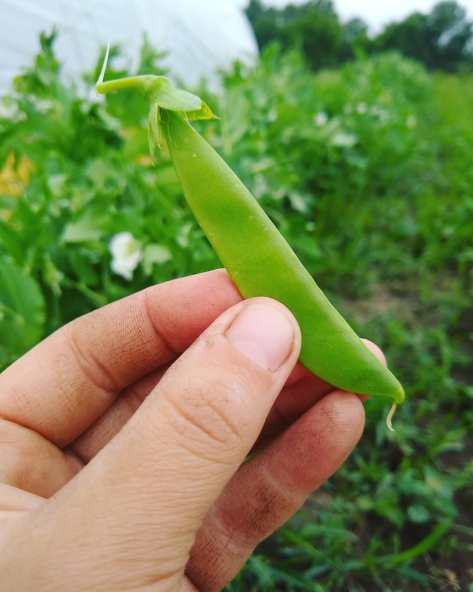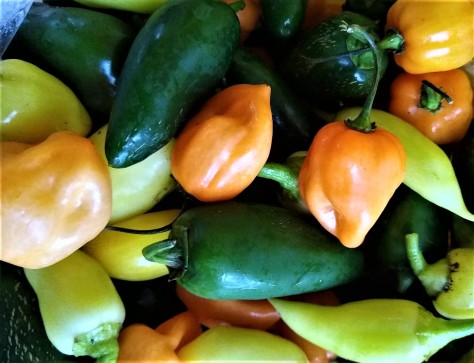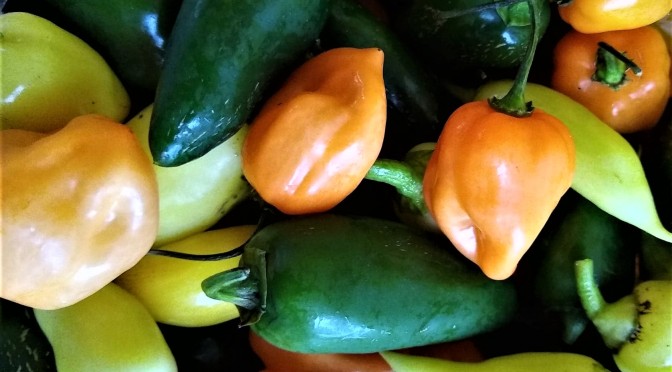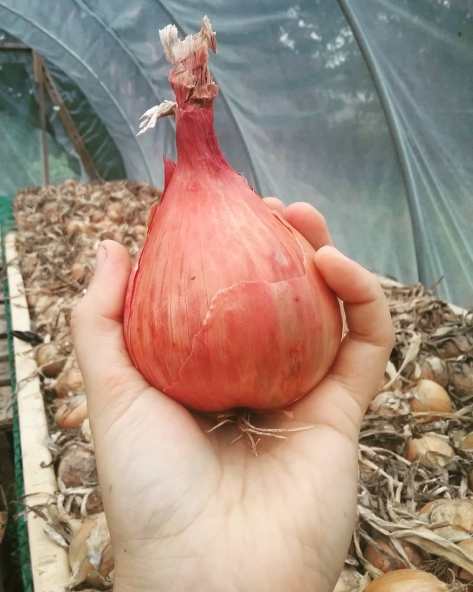Hi CSA Members!
Our first bite of cold (REAL cold!) hit us this last Friday and set us up for a busy week! We spent the entire day (and part of the night, too) pulling in any possible fruit, vegetable, and herb that could be harmed by frost, with temperatures expected to dip to around 29 degrees Fahrenheit (and dip they did).

What does this mean for all you CSA members? Though hot weather and various other crops have been damaged and/or killed off (such as basil, eggplants, peppers, and more), our walk-in cooler is stocked full of these foods to keep your CSA share varied, interesting, and delicious.
We also pulled in several varieties of winter squash, garlic, and onions into our indoor stores, too! As such, you’ll have plenty of these delicacies to enjoy up until the very end of your share, and even for Thanksgiving!
Without further ado, here’s what to look forward to this week:
- Sweet (Red and Green) Peppers
- Hot Pepper Mix
- Sugar Snap Peas New!
- Kale Bunch
- Small Cabbage
- Eggplants
- Norland (Red) Potatoes
- Red Onions
- Sweet Onions
- Shallots
- Garlic
What’s The Deal With Shallots? | Explanation & Tips
This week isn’t the first time you’ve gotten shallots in your share, and it most certainly won’t be the last.
These alliums (vegetable members of the onion family, which includes leeks, garlic, and onions) have the look and feel of a garlic clove, but a closer flavor to an onion.
When used raw, they are extremely flavorful; the epitome of the pungent onion! When cooked, however, their flavor softens to become sweeter and more mild. They are versatile in this way.
In our experience up here at Jupiter Ridge cooking all sorts of odds and ends, we think shallots go exceptionally well with beef, steak, burgers, shiitake mushrooms, and anything with a savory flavor – shallots really help elevate that. Shallots are especially well-known for being cooked with wine (both red and white) or sherry.
If you’ve ever been to a grocery store and checked the price tag on shallots: yes, they’re expensive! They’re one fancy onion.
For this reason, take care to use your shallot(s) wisely and well – shallots aren’t like other onions, where they can play a “background” flavor in soups or stews, for example. The flavor of shallots is truly exceptional and divine, and you don’t want it to go to waste. Make sure to use it for a very, very special meal where its flavors can shine!
Wellness Spotlight On: Hot Peppers
Farmer Will here considers hot peppers his favorite “medicinal herb” (or food, depending on how you look at it). Nothing clears you up better than going out for a night of medicinal hot wings.

In classic herbalism, most folks might be acquainted with cayenne pepper as the go-to healing hot pepper. In reality, though, all hot peppers are therapeutic in the same way, but in varying degrees according to their Scoville units (heat levels).
All hot peppers also contain “capsaicin,” too, to varying degrees (the chemical in hot peppers that make them spicy) – but this is also the “healing” compound in the fruit. If you haven’t noticed yet, this capsaicin can really help clear out your sinuses! Some other things hot peppers can help with:
- Boosting immunity
- Increasing circulation
- Improving heart health
- Relieving topical pain (not recommended if you’re not a professional!)
- Fighting colds and sinus infections
- Detoxing/cleansing of parasites
- Breaking fevers
In your share this week, you’ll be getting a good deal of jalapeños (fairly hot), yellow hot pickling peppers (don’t be fooled – these are surprisingly hot too), and a few serranos (about as hot as jalies) and maybe some habaneros (HOT!)
If you want to use these in a medicinal way sometime later (maybe in the winter when cold and flu season really ramps up), try pickling/canning them or drying them to help keep them preserved until you need them. Add them liberally to food when you’re feeling stuffy or a cold coming on – if you’re interested in the more “herbalist” aspects of using these, feel free to send us an email! (Or share with us your own suggestions/recipes!)
– jupiterridgefarm@gmail.com –


